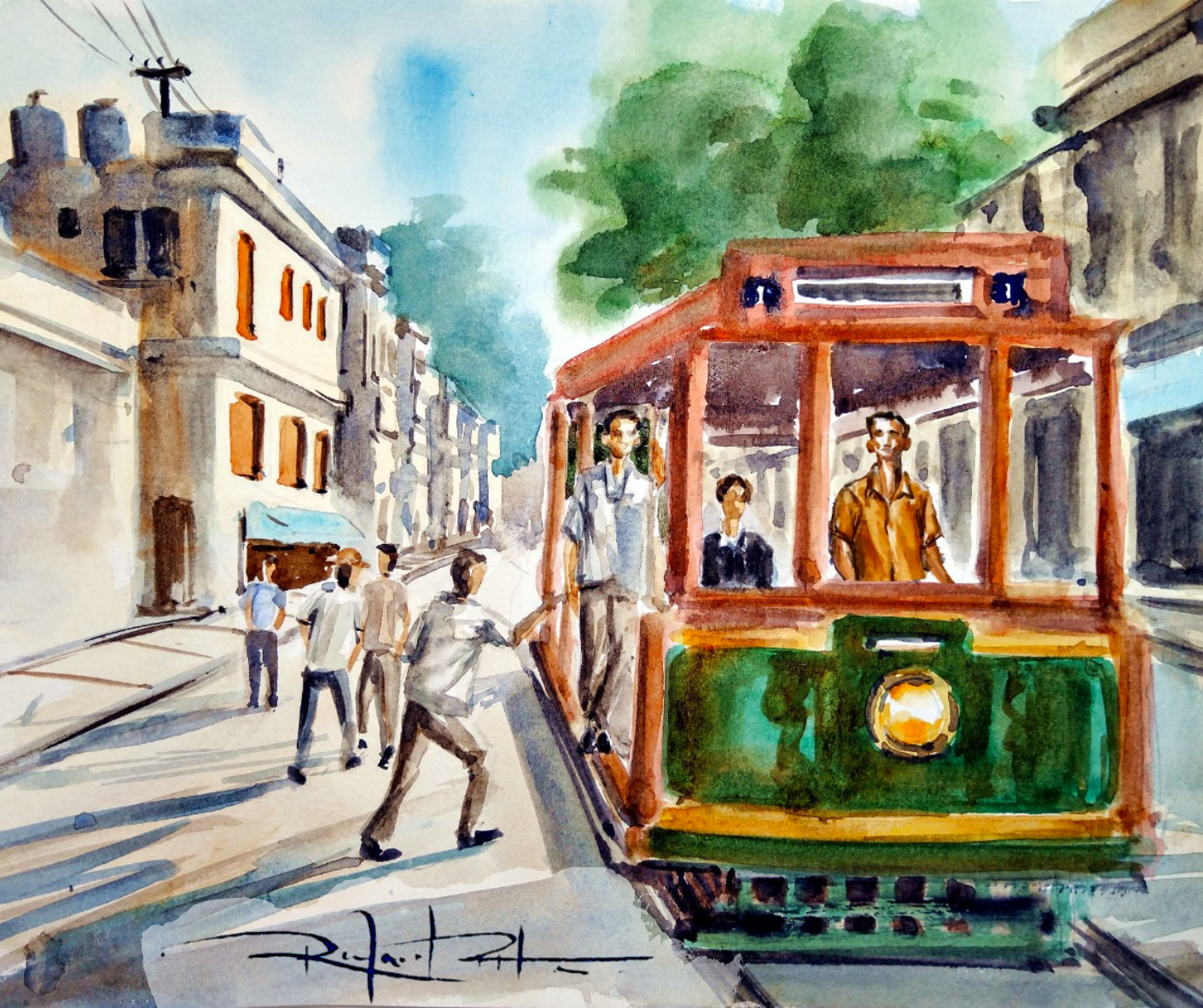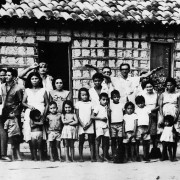Mestre Gabriel: talents, jobs and professions – 1
| January 10, 2022
Farmer, merchant, trolley conductor, mason, carpenter, rubber tapper, clerk, nurse, driver and brickmaker. José Gabriel da Costa, Mestre Gabriel, carried out all these professions in order to earn his daily bread and support his family throughout his journey on this earth, while also helping the brothers and sisters. On February 10th, he would be celebrating his 100th birthday. And to mark the one hundredth anniversary of his birth, today the UDV Blog publishes a series of three texts that highlight the Mestre’s talents, jobs and professions. On January 17th, the second text that covers “The struggle in the forest”; on January 24th, the third text that will review “The consolidation of the works in Porto Velho.”
Childhood talents and youth in Salvador
Tito Liberato*
José Gabriel da Costa was born on February 10th, 1922, on the Pedra Nova Farm, located in the city of Coração de Maria, in Bahia. At the time of his childhood, in the 1920s, it was a place without urban infrastructure, with dirt roads, houses far away from one another, without electricity or running water. The Retiro Church, located in the only existing plaza, was the meeting place for the few established families that lived in the surrounding areas and earned a living by working the land under the sun.
In this environment, young Gabriel demonstrated his abilities while still a child. On horseback and in games with his siblings, he showed rare dexterity. In conversations and in moments of improvisation, he already demonstrated his poetic talent, once even being nicknamed “fire song”, which was a figure present in cordel literature known for his intelligence and cleverness. When it was time for prayer, like in during the novenas and the blessings, he would impress with his ability to memorize prayers and the sacred rites, in addition to singing in a beautiful voice.
He stayed in school for close to three months, but he didn’t have much to learn from the teacher, instead dedicating himself to teaching his brother Antônio how to read and write, tracing out the letters and numbers in the soft sands of the countryside. His strength and willingness to work was evident as he used his garden tools to complete the tasks on his plot of land quickly so that he could go and help his siblings. When he went to work in a general store, at the age of 16, he dismantled the broken scale and then put it back together in perfect working order.
These talents of the young Gabriel would accompany him throughout his youth and adult life, helping him to fulfill his predestined Mission.
Salvador
In 1940, at the age of 18, he left the farm where his family lived, and headed to Salvador. There, he began to work with his brother Dionizio in a small business at the Modelo Market, a building located in the Cidade Baixa (Lower City), along the coast, where, in colonial Brazil, slaves from Africa were received, counted and traded.
Afterwards, he worked at a cable-car company, an electric vehicle that would drive along the tracks through the streets of Baixa dos Sapateiros, driving the trolley.
His family members also say that he attended capoeira circles in the neighborhood of Amaralina, where he once again stood out and became known by the name of “Zé Bahia”.
If on the farm, he was always present at the Catholic services, in those years that he was in the Bahian capital, he attended the works at the candomblé temple of Joãozinho da Gomeia. It was there and then that he presented himself as “Sultão das Matas” for the first time.
“Sultão” (“Sultan”) is derived from the Arabic word sultah, which means dominion. Therefore, Sultan means he who has power or dominion. However, his command was not exercised in Arabian territories, but rather in the forests, where he would later show all his authority via the talent that he brought with him.
Forest
In 1943, at the age of 21, Gabriel leaves Bahia. The world was immersed in World War II, and Brazil joined the effort of the Allies in order to obtain rubber, indispensable for the manufacture of military items. To continue in his Mission, Gabriel headed for the Amazon Rainforest to serve as a “rubber-tapping solider”, departing from Salvador/BA in route to Belém/PA. The strength and endurance he brought with him helped him to face approximately three months of travel aboard a Lloyd Brasileiro Co. ship, holed up in the ship’s cargo hold.
Born in the heart of the countryside, at one point he went to the seashore to wash his feet in the calm ocean waters of Baía de Todos os Santos, and from there he dove into the deep forest, where he would face the toughest living and working conditions, so harsh that only little more than half of the laborers survived. He needed to go, for there existed the Treasure that he was destined to find, not for himself, but for all of humanity.
*Tito Liberato is a member of the Body of Counsel and the Monitor of the Department of Memory and Communication (DMC) at the UDV’s General Headquarters (Brasília-DF).
Sources:
– Book – Mestre Gabriel, o Mensageiro de Deus (Ruy Fabiano)
– UDV 60 Year Institutional Agenda (2021)
– Alto Falante Histórico, May 2020 Edition (Caminho de Flores)
– PhD Thesis “The example in the life of those who preach: an analysis of the ayahuasqueiro field made from and with the members of the Beneficent Spiritist Center União do Vegetal” (Patrick Walsh Neto).
Get to know the texts from the Series: “Mestre Gabriel: talents, jobs and professions”:
- Childhood talents and youth in Salvador { you are here }
 English
English Português
Português Español
Español




Leave a Reply
Want to join the discussion?Feel free to contribute!